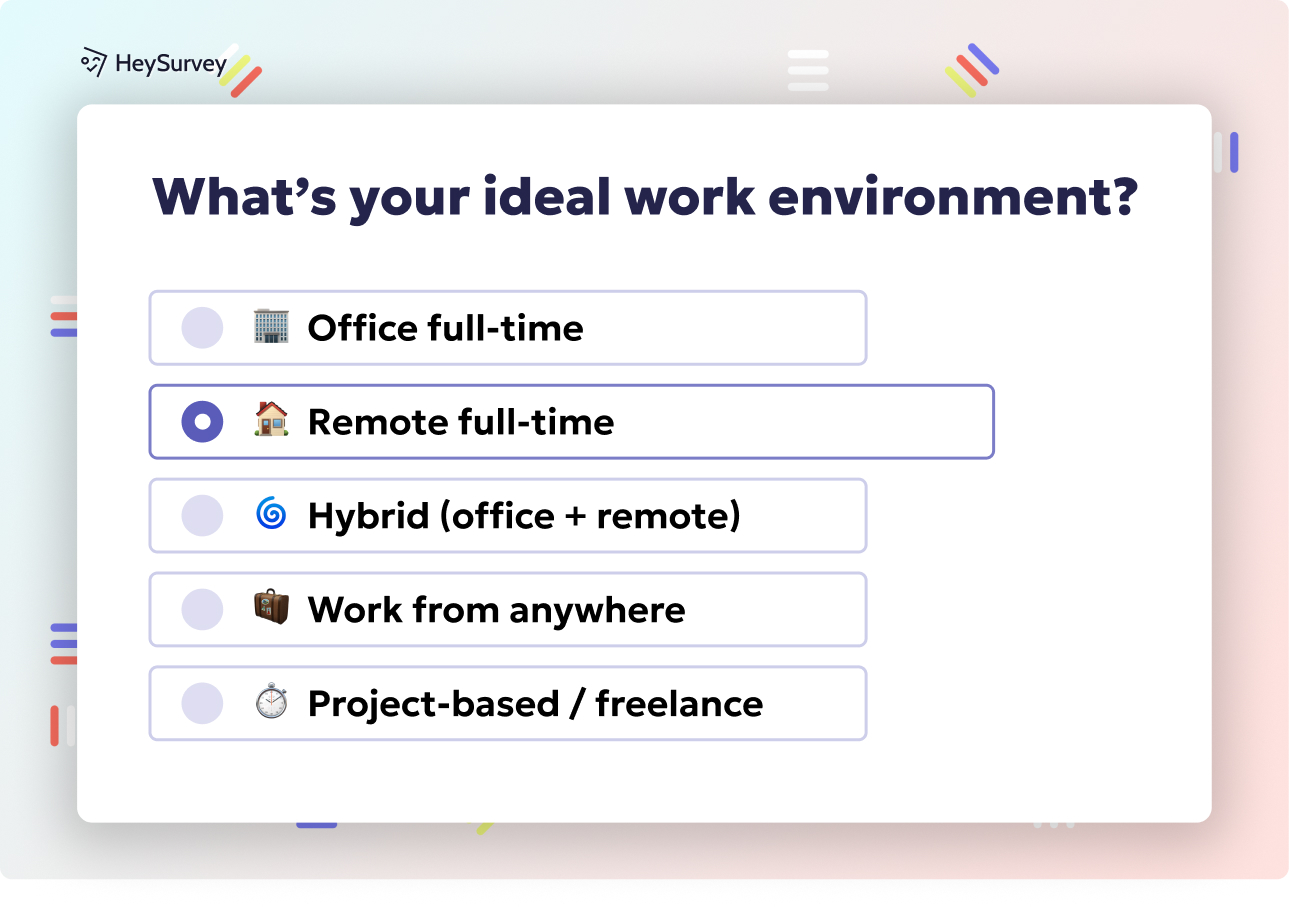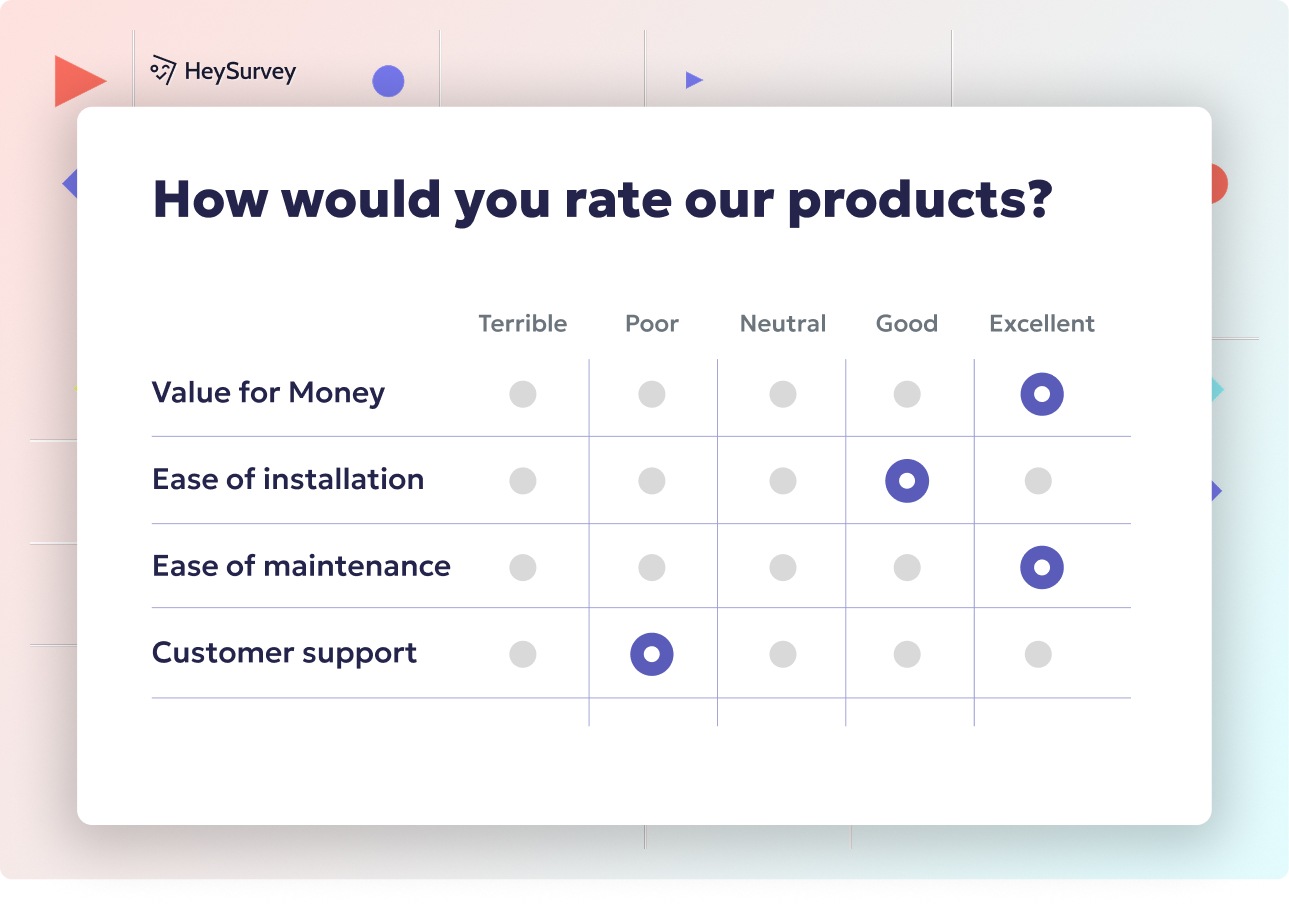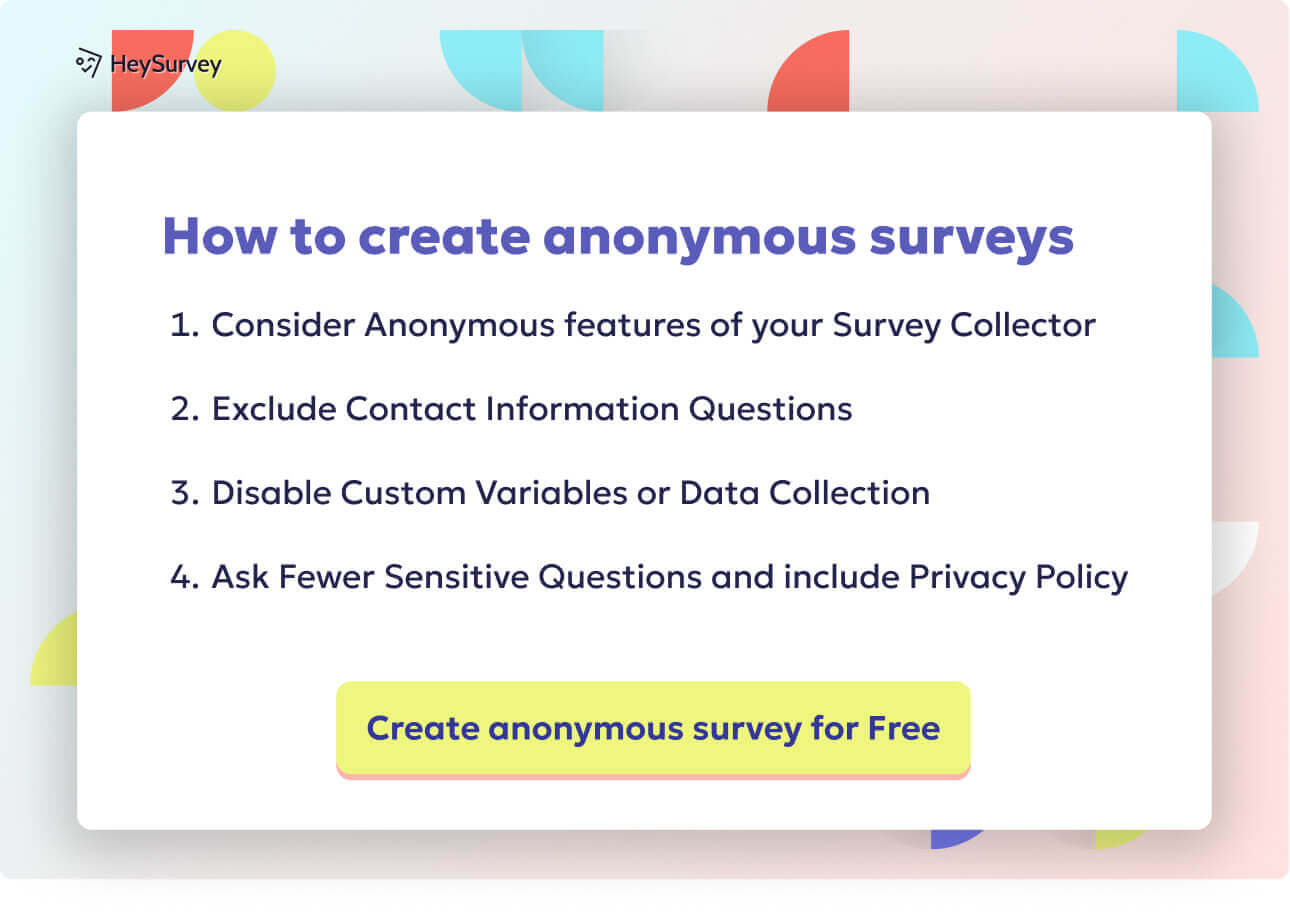31 Survey Target Market Questions to Know Your Audience Better
Discover 35+ expert survey target market questions to identify ideal customers and boost marketing success.
Survey Target Market Questions: How to Ask the Right Questions to Know Your Audience
Every marketer dreams of peering behind the curtain to identify their ideal customer. That’s what target-market surveys are all about: asking smart questions that decode your audience’s motivations, habits, and needs. Whether you’re launching a slick new product, plotting an ambitious campaign, or mapping out a market expansion, these questions can make or break your strategy. This guide walks you through seven essential types of market surveys, each designed to reveal a different slice of your audience’s personality. Let’s get nosy—in all the right ways!
Demographic Surveys
Why & When to Use Demographic Segmentation
Demographic segmentation survey questions are the bread and butter of audience profiling. They help define the “who” behind your market, capturing age, gender, income brackets, education levels, and even postal codes. This data anchors persona-building, making it a crucial step before you spend a single cent on ads.
If you’re sizing your total addressable market (TAM) or selecting media channels for an ad buy, you’ve got to know who you’re speaking to. These surveys add precision to targeted outreach. Marketers running broad campaigns, or seeking to adjust their messaging to speak to “suburban Gen Z parents” or “urban millennials with postgraduate degrees,” need this foundational layer.
Knowing your audience’s basic stats means you can match product lines to wallets, messages to mindsets, and offers to interests, dramatically improving your chance of a hit.
Sample Demographic Segmentation Survey Questions
- Which of the following age ranges applies to you?
- What is the highest level of education you have completed?
- Which best describes your current household income before taxes?
- What is your current employment status?
- In which postal/ZIP code do you currently reside?
Building Your Audience Profiling Questionnaire
Demographics do more than fill in blanks—they clarify your market’s size, diversity, and location. Armed with this info, you can:
- Tailor marketing content for audience segments
- Design products or services for specific life stages
- Personalize communications by region or income
Demographic surveys are also gold when it comes to audience profiling questionnaires for campaign planning or annual brand audits. They help you spot gaps in your outreach and optimize both creative direction and budget allocation.
A solid demographic snapshot gives your strategy teeth—without it, you’re flying blind.
Demographic survey questions are essential for audience profiling, enabling precise targeting and personalized marketing strategies. (ovationmr.com)
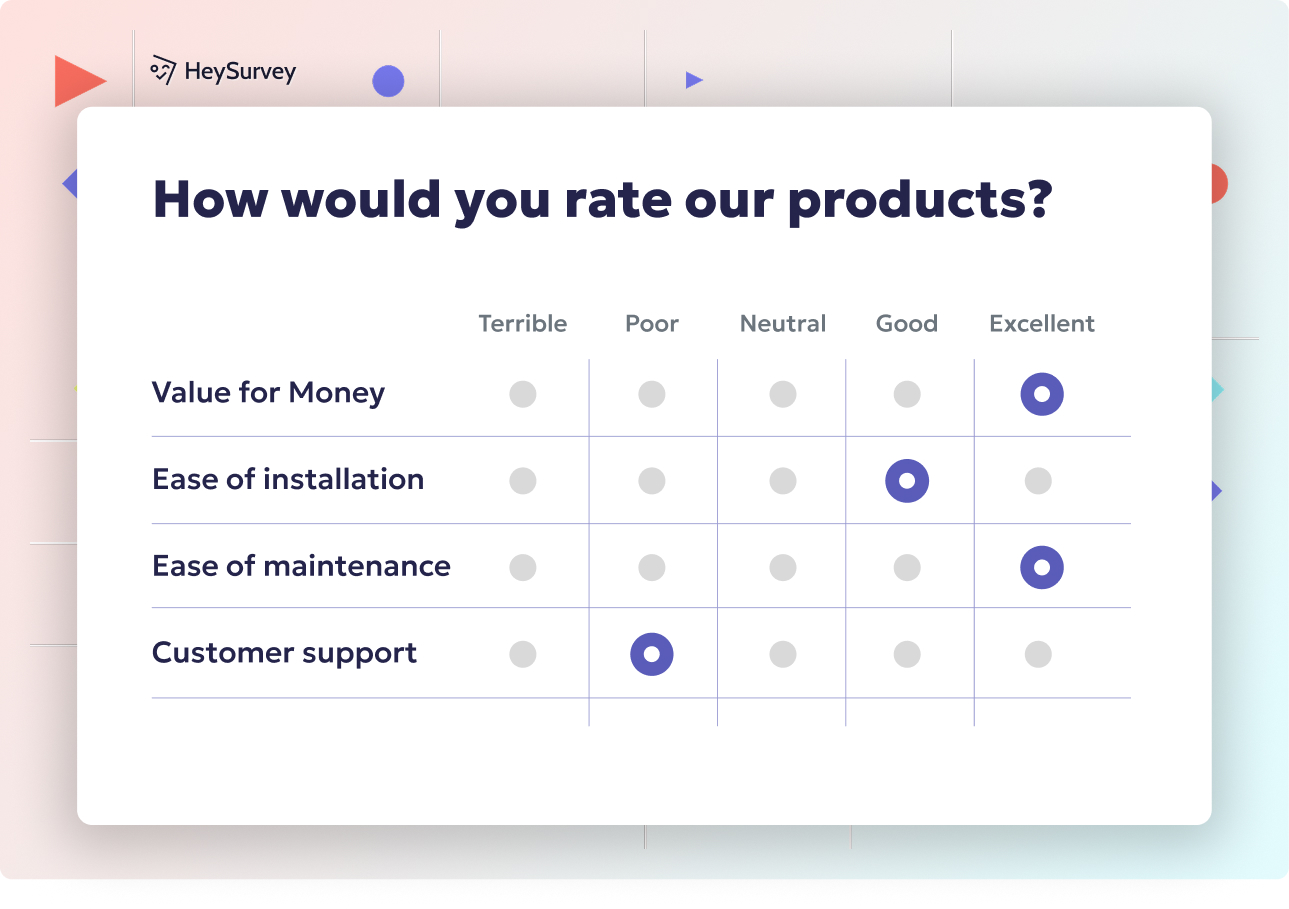
How to Create Your Target-Market Survey with HeySurvey in 3 Easy Steps
Ready to dive in and build your very own survey for your target market? HeySurvey makes it delightfully simple—even if you’ve never created a survey before. Here’s your quick-start guide to get a survey live and collecting valuable audience insights in no time.
Step 1: Create a New Survey
- Head to the HeySurvey dashboard and click Create Survey.
- Choose how you want to start: pick from a pre-built template (perfect for market research) or an empty sheet if you want full customization.
- Give your survey an internal name—something you’ll recognize later when managing multiple surveys.
This is your blank canvas where the magic begins.
Step 2: Add Your Target-Market Questions
- Click Add Question at the top or between existing questions.
- Select the question type that matches what you need—single / multiple choice, scale, text input, or dropdown.
- Type your question and customize answer options as needed.
- Mark questions as required if it’s a must-get answer.
- Repeat until your survey includes all your key target-market questions—whether demographic, psychographic, behavioral, or any other type we discussed!
The Survey Editor makes editing and rearranging questions a breeze.
Step 3: Publish and Share Your Survey
- Hit the Preview button to see how your survey looks live on desktops and mobiles.
- If it feels good, click Publish—you’ll need to create an account if you haven’t yet.
- Get your unique shareable link or embed code to send to your audience right away.
- Monitor responses in real-time using the built-in results dashboard.
Bonus Tips to Make Your Survey Shine
- Apply Branding: Upload your company logo and tweak colors/fonts in the Designer Sidebar to make your survey feel truly yours.
- Define Settings: Use the Settings panel to set start/end dates, limit responses, set redirect URLs, or allow respondents to view results.
- Skip and Branch Logic: Set up branching to personalize the question flow based on previous answers, asking only relevant questions and boosting completion rates.
With HeySurvey’s intuitive tools, you’ll be gathering rich, actionable insights from your perfect audience in a flash. Ready to unlock the secrets of your market? Click the button below to open a survey template and get started!
Psychographic Surveys
Why & When to Use Psychographic Segmentation
It’s not enough to know your audience’s age or zip code. Psychographic segmentation surveys dive a layer deeper. These questions reveal what truly motivates people—attitudes, lifestyles, beliefs, and personal values. They’re a marketer’s best friend when it’s time to fine-tune brand voice or tailor value propositions for the most impact.
If you’re wrestling with how to position your brand or sharpen creative messaging, a psychographic readout is the missing puzzle piece. Companies facing lagging engagement often discover they haven’t connected with their audience on a values or lifestyle level. These insights can turn generic campaigns into irresistible ones—because they plug directly into your audience’s worldview.
Knowing whether your market values sustainability, leans toward technology, or loves outdoor adventures paints a vivid portrait. It stops marketing guesswork and starts meaningful brand resonance.
Sample Psychographic Segmentation Survey Questions
- Which statement best describes your personal values when choosing a brand?
- How strongly do you agree: “I prefer experiences over possessions.”
- Rate your interest in sustainable products on a scale of 1–7.
- What hobbies occupy most of your free time?
- Which of these statements reflects your view on technology adoption?
How Lifestyle and Attitude Questions Shape Strategy
When you ask clever lifestyle and attitude questions, you gain access to what drives brand loyalty—or indifference.
By understanding:
- What your market values in daily life
- How open they are to new experiences
- What causes or interests they champion
Marketers can forge deeper emotional connections. These surveys reveal not just the mindsets your messages should target, but how to craft products and campaigns that feel bespoke.
If demographics sketch an outline, psychographics color it in—turning potential customers into brand advocates.
Psychographic segmentation enables marketers to craft targeted messages that resonate deeply with specific audience values, leading to increased engagement and brand loyalty. (qualtrics.com)
Behavioral Surveys
Why & When to Use Customer Behavior Survey Questions
Customer behavior survey questions are your ticket to understanding not just who your audience is, but how they act. Want to know how often they buy, what drives them to switch brands, or which devices trigger most purchases? Behavioral questions turn fuzzy assumptions into hard data.
If re-engaging dormant users, optimizing loyalty programs, or designing retargeting campaigns is your goal, don’t skip this step. Behavioral surveys also inform product tweaks, new service launches, and even content strategy by highlighting where, when, and how customers interact with your brand.
Predicting the next move—churn, upsell, or repeat purchase—requires insight into past actions. Behavioral insights uncover patterns that help you get ahead of the curve.
Sample Customer Behavior Survey Questions
- How often do you purchase [product category] in a typical month?
- Which device do you most frequently use to shop online?
- What triggers you to switch brands in this category?
- How many loyalty programs are you currently active in?
- Which of these statements best reflects your shopping style (impulsive, planned, research-driven, etc.)?
The Value of a Purchase Behavior Questionnaire
By collecting responses through a purchase behavior questionnaire, you can:
- Identify which audiences show loyalty vs. those at risk of switching
- Optimize conversion paths based on device use (mobile, desktop, app)
- Tailor promotions or content to fit audience intent
Knowing what prompts purchase, what channels drive engagement, and what makes shoppers say goodbye is key. Behavioral surveys are your best ally in transforming buyer insights into bottom-line results.
Great marketing isn’t just about who buys—it’s about why, how, and how often.
Needs-Based Surveys
Why & When to Use Customer Needs Surveys
Satisfy your users and you’ll keep them forever—but you have to understand their real challenges. Customer needs surveys let you identify what customers are trying to achieve (their “jobs-to-be-done”) and what’s preventing them from getting there today.
Use these surveys before developing a new product, or when prioritizing which feature to build next. They’re a game changer at the feature-optimization stage, especially if you want to avoid costly flops or missed opportunities.
Needs-based questions uncover gaps between current offerings and the outcomes your market craves. With this roadmap, you can design products and solutions that genuinely move the needle.
Sample Customer Needs Survey Questions
- What is your biggest challenge when using [current solution]?
- Rank the following product attributes in order of importance.
- Describe a situation where our product would be most valuable to you.
- Which outcome matters most when solving [problem]?
- How satisfied are you with the solutions currently available?
How Jobs-to-be-Done Questions Drive Value
Asking smart jobs-to-be-done questions reveals both practical and emotional needs—the ones that drive true adoption.
When you know:
- Which problem keeps your users up at night
- What “success” looks like for your audience
- Where current solutions fall short
You can focus your resources and marketing messages where they matter most. Needs-based surveys replace guesswork with a data-rich blueprint that guides product roadmaps, marketing, and customer support strategies.
If you want solutions that stick, start by really listening.
Incorporating customer feedback into product development can lead to a 25% increase in customer retention. (moldstud.com)
Product Usage Surveys
Why & When to Use Product Usage Survey Questions
Understanding how, when, and why customers use your product is crucial for product enhancements and feature adoption questionnaires. These surveys are perfect for post-purchase feedback, beta programs, or whenever you need to deepen brand loyalty.
If you’re trying to spot friction points, prioritize usability improvements, or find upsell opportunities, this data is pure gold. Product usage surveys tell you which features are crowd favorites—and which ones collect digital dust. Knowing this unlocks smarter UX, streamlined onboarding, and targeted messaging to boost usage frequency.
A product only delivers value if your audience actually uses it. Usage feedback closes the loop between design intentions and real-world behaviors.
Sample Product Usage Survey Questions
- How many times did you use [product] in the last seven days?
- Which features do you use most and least?
- In what environment do you typically use the product (home, office, on-the-go)?
- What, if anything, prevents you from using the product more often?
- Have you customized any settings or workflows? If yes, which ones?
The Power of Feature Adoption Questionnaires
By digging into product usage survey questions, you uncover:
- Which features drive stickiness and retention
- Where the UX gets confusing or needs refining
- What environments or workflows your product fits best
You’ll pinpoint blockers that keep usage low and find new ways to delight your power users. Refine onboarding? Push underused features? Target happy customers for upsells? This survey data powers it all.
Getting real about product usage means making changes users genuinely love.
Purchase-Intent Surveys
Why & When to Use Purchase Intent Questionnaires
Thinking about a new launch or promotion? Gauge audience readiness with a purchase intent questionnaire. These surveys measure how likely your audience is to buy, what price turns them away, and what factors might slow their decision.
Perfect before a product drop, seasonal campaign, or if you’re trying to forecast demand, purchase-intent surveys help de-risk your go-to-market strategy. They highlight barriers to purchase—like cost, timing, or unclear value—and let you optimize pricing or messaging before launch.
For both big-ticket and everyday items, you’ll want an early read on audience pulse.
Sample Purchase Intent Questionnaire Questions
- How likely are you to purchase [product] within the next three months?
- What price point would you consider to be too expensive?
- Which payment method would you prefer for this purchase?
- What factors could delay your decision to buy?
- Which of these statements best reflects your current consideration stage?
How Buying Likelihood Surveys Guide Launches
Buying likelihood surveys deliver more than just a “maybe.” They help you:
- Forecast potential sales for planning inventory
- Calibrate promotional or pricing strategies
- Nail timing for the most motivated segments
Instead of launching and hoping, you can double down where purchase intent is highest—and revise where hurdles remain. When every product launch feels like a gamble, these surveys provide the winning odds.
Don’t guess—ask, and sell with certainty.
Brand Awareness & Perception Surveys
Why & When to Use Brand Awareness Survey Questions
If you want to know how people think and feel about your brand, start with brand awareness survey questions. These uncover recognition, recall, and the emotions tied to your company or product. Run them after big campaigns, quarterly for benchmarking, or whenever you need hard evidence that branding efforts are working.
Are you the first name customers think of, or lost in the shuffle? Is your brand trendy, reliable, edgy, or forgettable? These are the answers that separate strong brand equity from weak rivals.
Insights from these surveys also guide repositioning efforts, message tweaks, and future creative briefs.
Sample Brand Awareness Survey Questions
- Which brands come to mind first when you think of [category]?
- How familiar are you with [your brand] on a scale of 1–5?
- What three words would you use to describe [your brand]?
- How likely are you to recommend [your brand] to a friend?
- Where have you recently encountered information about [your brand]?
Why Brand Perception Research Matters
Brand perception research is not just about ego-stroking. When you nail down customer associations and awareness, you can:
- Spot gaps between identity and reputation
- Track impact from campaigns, sponsorships, or PR waves
- Adjust messaging to bridge perception divides
If your audience thinks you’re premium but you market like everyone else, you’re leaving profit on the table. If recognition is low after a major push, it’s time to course-correct. Brand surveys are the pulse check every marketer needs.
A strong, well-understood brand is your ticket to pricing power, loyalty, and long-term growth.
Best Practices: Dos and Don’ts for Crafting Target-Market Survey Questions
Dos for Stellar Survey Design
If you want to improve survey response rates, start with the basics. The right approach boosts engagement and gives you actionable data instead of frantic guessing. Here’s what works:
- Only use neutral language—let the respondent take the lead
- Break up your survey with clear, logical segments
- Always pilot test with a small group before going live
- Make sure everything is mobile-friendly—most people tap, not click
- Add a progress indicator, so respondents know the finish line is near
A well-designed survey looks effortless and feels respectful to the participant.
Don’ts for Questionnaire Design
A bad survey is like spinach in your teeth—everyone notices but you. To optimize questionnaire design, avoid these common blunders:
- Never write double-barreled questions (“How satisfied are you with price and quality?”)
- Skip jargon and acronyms—the simpler, the better
- Don’t lead the witness with pushy or biased phrasing
- Keep it punchy—no survey should feel endless
- Sensitive data should never be mandatory without an opt-out
With a combination of thoughtful dos and strategic don’ts, your surveys will attract richer responses and far less irritation.
Well-crafted questions are at the heart of every powerful audience insight.
Surveying your target market, with the right blend of demographic, psychographic, and behavioral questions, unlocks a deeper understanding of your ideal customers. These questions are the key to segmentation, sharper campaigns, and products that people genuinely want. Done well, surveys inform every step, from innovation to outreach. Ready to stop guessing and start knowing your audience? Your next survey is your secret weapon.
Conclusion
Great marketing starts with sharper questions. Understanding your audience with these survey frameworks gives you the confidence to act boldly, personalize like a pro, and outsmart the competition. With the right approach, every answer becomes a stepping stone toward better products and standout campaigns. Ready to ask, listen, and grow? Your audience is eager to tell you everything you need to know.
Conclusion
Crafting the right survey questions is an art and a science. By understanding your audience through targeted questions, you can tailor your products, marketing, and strategies to meet their needs. Remember, the key to success lies in asking the right questions and listening closely to the answers.
Related Market Survey Surveys

32 Market Research Survey Questions: Types, Samples & Tips
Explore 30+ market research survey questions with examples across types like CSAT, concept testin...
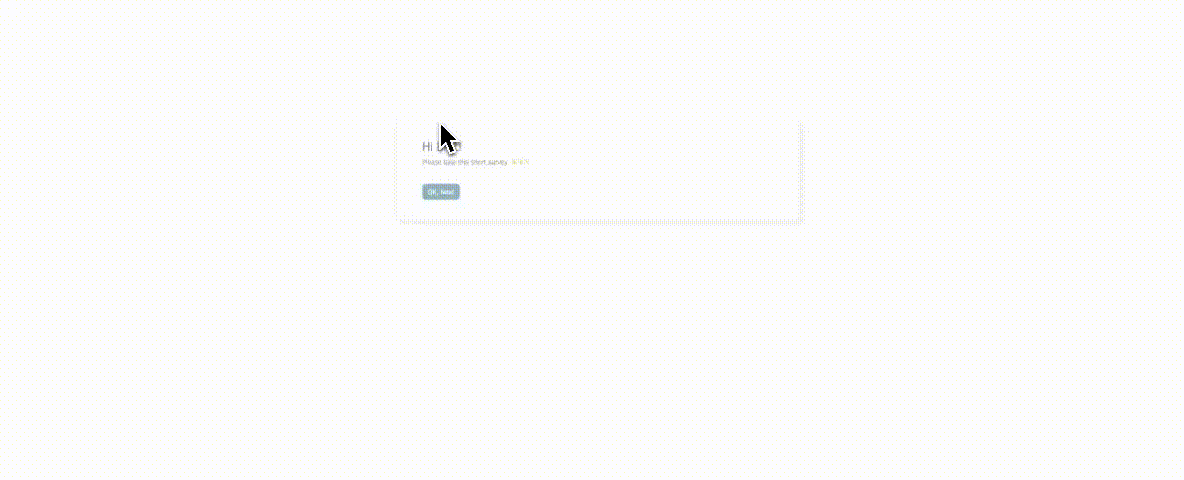
30 Coffee Survey Questions: The Complete Guide for Cafés & Brands
Discover 25+ expert coffee survey questions to boost cafés, product development, and brand insigh...
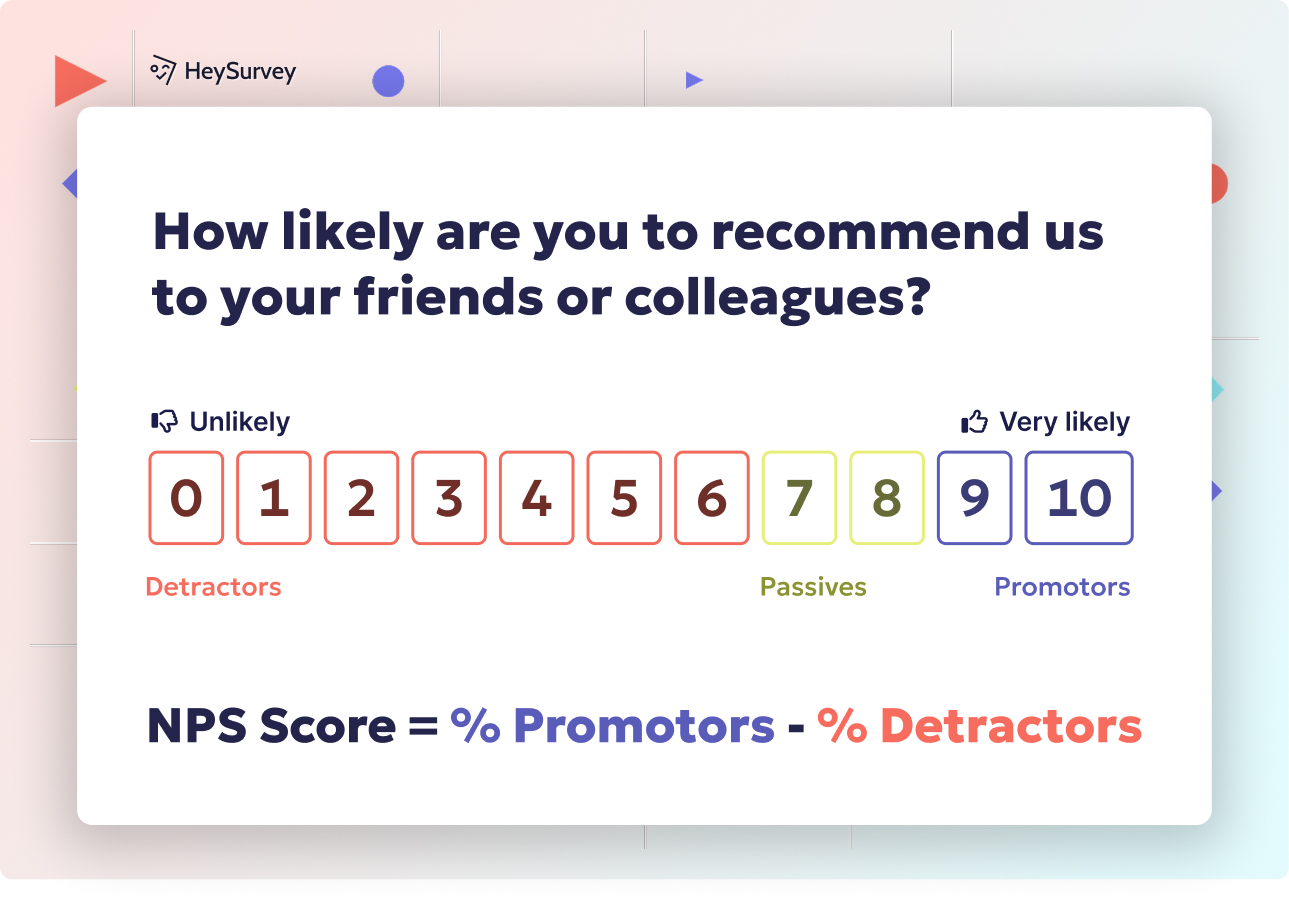
31 Content Marketing Survey Questions for Actionable Insights
Discover 25+ content marketing survey questions to gather actionable insights—boost audience alig...
